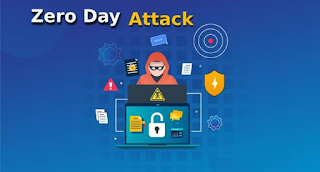Zero-day vulnerabilities are critical because they represent security flaws in software or hardware that are unknown to the vendor and unpatched, making them prime targets for attackers. Below, I’ll explain why they’re so dangerous in a concise yet comprehensive way, drawing on cybersecurity principles and tying back to your interest in Attack Surface Management (ASM) tools, as they often aim to mitigate such risks.
Why Zero-Day Vulnerabilities Are dangerous.
1. Unknown to Vendors: Zero-day vulnerabilities are flaws that the software or hardware vendor is unaware of or hasn’t yet fixed. This means no patches or updates are available, leaving systems exposed until a fix is developed and deployed, which can take days, weeks, or longer.
2. Exploited Before Disclosure: Attackers often discover these vulnerabilities before vendors or researchers, giving them a window to exploit systems without detection. These attacks, called zero-day exploits, can bypass existing security measures like antivirus, firewalls, or intrusion detection systems, as no signatures or defenses exist for the flaw.
3. High-Impact Potential: Zero-day vulnerabilities often target critical components—operating systems, browsers, or widely used software (e.g., Microsoft Windows, Adobe, or cloud platforms). A single exploit can lead to:
• Data Breaches: Theft of sensitive data (e.g., customer records, intellectual property).
• System Compromise: Full control of affected systems, enabling ransomware, malware, or espionage.
• Supply Chain Attacks: Exploits can spread through interconnected systems, as seen in the 2020 SolarWinds attack, which used a zero-day to compromise multiple organizations.
4. Targeted and Advanced Attacks: Zero-days are often used in Advanced Persistent Threats (APTs) by sophisticated actors like nation-states or organized cybercriminals. For example, the Stuxnet worm exploited multiple zero-days to target Iran’s nuclear facilities, showing their potential for precision and damage.
5. Time Gap to Mitigation: The “zero-day” period—between discovery by attackers and a vendor patch—leaves organizations defenseless. Even after a patch is released, applying it across complex environments (e.g., cloud, on-prem, IoT) takes time, during which attackers can continue exploiting systems.
6. High Black-Market Value: Zero-day vulnerabilities are sold for thousands to millions of dollars on the dark web, depending on the target (e.g., iOS zero-days can fetch $1M+). This fuels a thriving market, increasing the likelihood of exploitation by malicious actors.
7. Challenges for ASM: In the context of Attack Surface Management (ASM), zero-days are hard to detect because they aren’t in vulnerability databases (e.g., CVE). Most ASM tools (like CyCognito or Intruder, mentioned previously) rely on known vulnerability signatures or behavioral analysis, which may miss zero-days until they’re actively exploited or disclosed.
Real-World Examples
• Log4Shell (2021): A zero-day in Apache Log4j allowed remote code execution, affecting millions of systems globally. It was exploited widely before patches were available.
• Microsoft Exchange Server (2021): Multiple zero-days enabled attackers to compromise servers, leading to data theft and ransomware in thousands of organizations.
• Pegasus Spyware: NSO Group’s spyware used zero-days to target iOS and Android devices, enabling surveillance without user interaction.
Why They Matter for Organizations
• No Immediate Fix: Without patches, organizations rely on workarounds, detection, or isolation, which may not fully mitigate risks.
• Reputation and Financial Loss: Breaches from zero-days can lead to regulatory fines, lawsuits, and loss of customer trust (e.g., Equifax’s 2017 breach, partially tied to unpatched systems, cost $1.4B+).
• Widespread Exposure: Modern attack surfaces (cloud, APIs, third-party vendors) amplify the impact of zero-days, as interconnected systems can propagate attacks.
Mitigating Zero-Day Risks (Tying to ASM Tools)
While zero-days are inherently hard to prevent, ASM tools and strategies can reduce exposure:
• Continuous Asset Discovery: Tools like CyCognito or Palo Alto Cortex Xpanse identify unknown assets (e.g., shadow IT) that could harbor zero-days, reducing blind spots.
• Behavioral Monitoring: Solutions like Mandiant or IBM Security Randori use AI and threat intelligence to detect anomalous activity, which may indicate zero-day exploitation.
• Patch Management: Tools like Qualys or Tenable.io prioritize rapid patch deployment once vendors release fixes.
• Network Segmentation: Limits the spread of exploits, a feature supported by tools like Microsoft Defender EASM.
• Threat Intelligence: Platforms like Recorded Future (not listed earlier but relevant) provide early warnings of zero-day exploits in the wild.
• Zero Trust Architecture: Assumes no system is secure, reducing reliance on perimeter defenses.
Recommendations
• Use ASM Tools Proactively: Deploy tools like Intruder or Rapid7 InsightVM to monitor your attack surface continuously and reduce the likelihood of unpatched systems being exploited.
• Stay Informed: Subscribe to threat intelligence feeds (e.g., via Mandiant or SOCRadar) to learn about zero-days as soon as they’re disclosed.
• Implement Defense-in-Depth: Combine firewalls, endpoint detection (e.g., CrowdStrike), and SIEM tools to catch exploits that ASM tools might miss.
• Regular Red Teaming: Simulate attacks (e.g., with IBM Randori) to test resilience against zero-day-like scenarios.
Why Critical in One Sentence: Zero-day vulnerabilities are critical because they’re unknown, unpatched flaws that attackers can exploit to gain unauthorized access, steal data, or disrupt systems before defenses can be applied, leaving organizations vulnerable across their attack surface.
Tags:
zero-day


Good read. Very informative.
ReplyDeleteThanks Jeff..
Delete